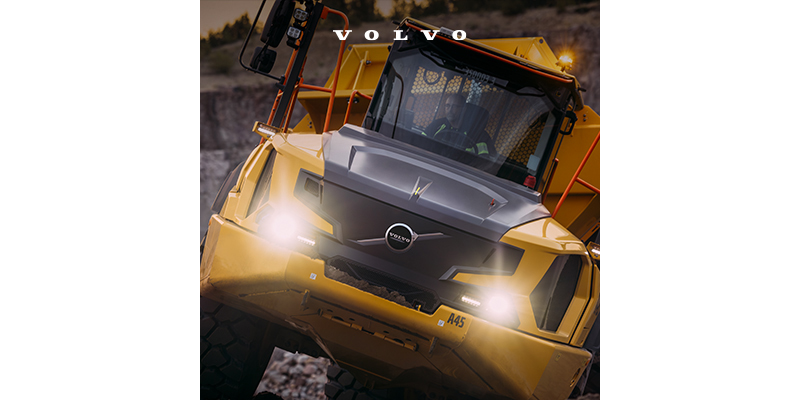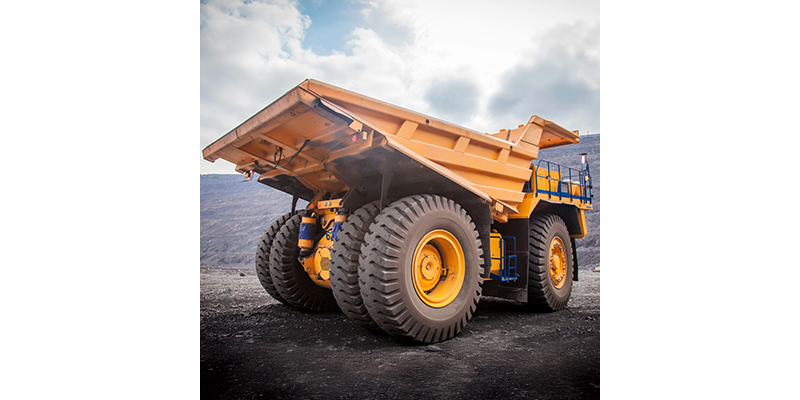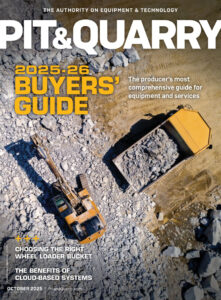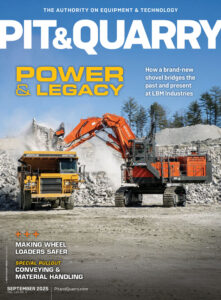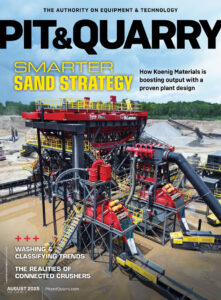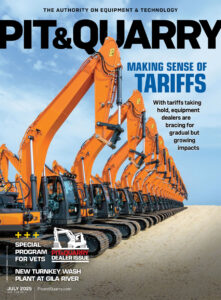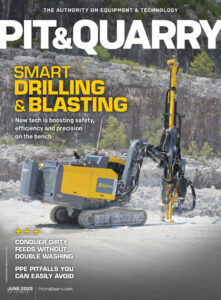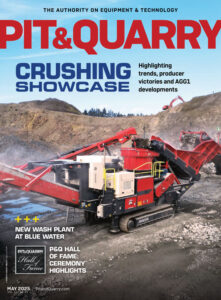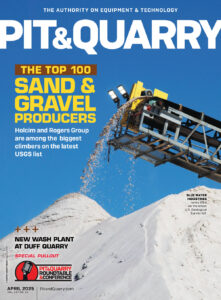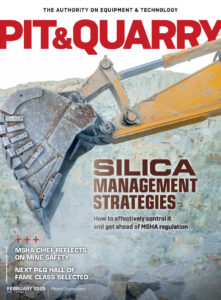Editor’s note: The following is a selected portion from the upcoming 2025 Edition of the Pit & Quarry University Handbook. The full handbook is slated for release this November, at which time additional content will be published online. Be sure to check back for more content as it’s made available!
While truck scales may look simple from the outside, there are many complex components necessary for accurate and fast measurements.
Interior of a truck scale
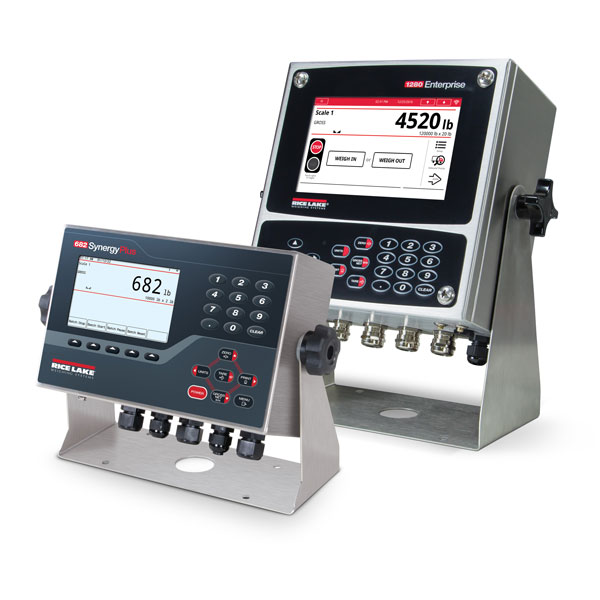
To understand how a truck scale works, it’s important to know what’s happening inside the scale.
1. Load cell. The load cell is a delicate piece of a truck scale. Multiple load cells are placed throughout the scale to accurately detect weight. Load cells flex when a truck passes over. This flexing impacts the electrical signal traveling to the strain gauge inside the load cell, and the resulting signal is sent to the junction box.
2. Junction box. Electrical signals from load cells are transmitted to the junction box. The junction box calculates the truck’s weight by equalizing load cell signals. Depending on the instrumentation, the load cells or the indicator can calculate the weight.
3. Indicator. Typically wired near the truck scale, the indicator will display the final weight. The indicator is the control terminal, which can manage in/out truck programs and printers with additional programming.
Exterior of a truck scale
4. Foundation. The scale is installed on top of a foundation to keep it level and steady. Foundation designs such as pier, floating slab and pit are most common. The best foundation depends on the needs of the application and environment.
5. Weighbridge. The weighbridge is the large steel or concrete deck that trucks directly drive over. It houses the load cells and wiring. Ease of installation and access points to load cells depend on the manufacturer.
6. Finish. The scale’s finish protects it from the elements. This is typically done with urethane liquid paint or powder coating. The color varies depending on the manufacturer or customization opportunities.
Alternative truck scale designs
Stationary truck scales function with these components. Truck scales, however, get more complex when considering alternatives for unique applications. Consider the following:
• Portable scale. A portable truck scale uses wireless wheel pads positioned under each truck wheel. The weights from each pad are sent to a remotely paired indicator to calculate the nonlegal for trade weight.
Large, single-draft portable truck scales are another alternative. These are suited for temporary applications but can be moved using equipment. These scales are legal for trade.
• Axle scale. An axle scale is a smaller device, so it weighs each axle individually. Then, the junction box calculates the overall weight. This is known as axle weighing.
Single-draft weighing, meanwhile, occurs when a whole truck is weighed at once. Scales that use axle weighing are not legal for trade.
• In-motion weighing system. In-motion weighing relies on an indicator with in-motion software and a speed sensor. Using a single-draft in-motion weighing system, vehicles are weighed while crossing the scale at low speeds, reducing the time trucks spend idling.
Calibration methods for scale accuracy
There are four common calibration methods that can be used to check or verify the accuracy of a scale: Using calibration weights, using an object from a calibrated scale, using material to substitute for weights, and calibrating with a simulator or theoretical calibration.
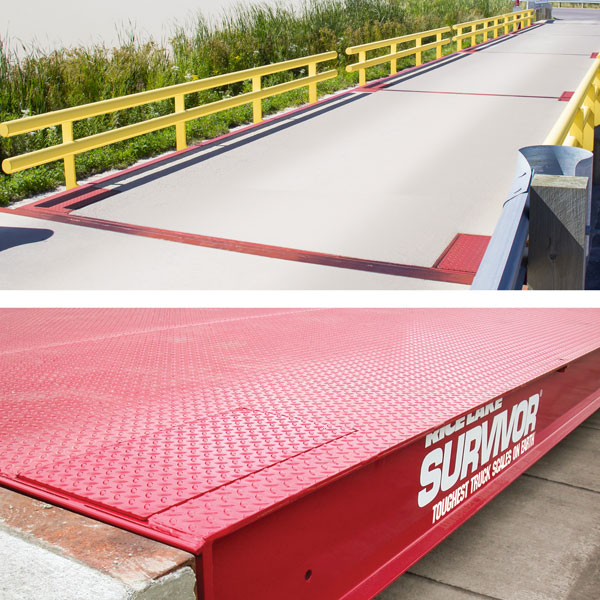
1. Using calibration weights. Using certified calibration weights, or test weights, is the most accurate method for calibrating a scale – and it should be a first choice. This is also the only legal-for-trade method that can be used to calibrate scales.
It’s essential to review “NIST Handbook 44” to ensure you’re using the correct class and amount of weight for the capacity of your scale during calibration procedures. Generally, you’ll need weights that equal at least 12.5 percent of the scale’s capacity, though some lower-capacity scales may require weights equal to the total capacity.
For example, if you have a scale with a 50-pound capacity, “Handbook 44” recommends using calibration weights equivalent to 50 pounds to calibrate the scale.
While it is recommended you use certified calibration weights to calibrate your scales – and it is necessary to do so in legal-for-trade applications – there are some instances when calibration weights may not be available. Still, perform a scale calibration through this primary method with certified calibration weights whenever possible.
2. Using an object from a calibrated scale. If you have a scale known to be accurately calibrated, you can use it to help calibrate another scale if calibration weights are not available.
To compare the scales, place an object on the calibrated scale and record the exact weight. Then, place the same object on the uncalibrated scale to ensure it produces the same weight reading. The object works as a temporary substitution for calibration weights to check accuracy quickly.
This method is helpful for heavy-capacity scales, such as truck scales. A truck could drive into a calibrated scale, record the weight and then drive onto an uncalibrated second scale to check the accuracy.
3. Using material to substitute for weights. This method isn’t as accurate as using certified calibration weights, but it can be used if you don’t have enough weights to meet the minimum requirement of 12.5 percent of the scale’s capacity.
After performing an initial calibration with the weights you have, remove the weights and replace them with products or material – and then add the calibration weights back to see if the scale is returning the expected amount of weight.
4. Calibrating with a simulator or theoretical calibration. The final method is using a simulator, or theoretical calibration, to calibrate a scale only when you don’t have any calibration weights. This is the least accurate calibration method and should never be used in a legal-for-trade application.
After using this method, you should return to the scale with test weights to perform a full calibration.
This is a complex process with room for error because many calculations are involved. You will also need additional information about the system, such as excitation voltage from the indicator and millivolt output of the load cells.
Because you’re using a simulator connected to the weight indicator, you won’t be able to properly exercise the scale or account for environmental factors during calibration. You will also need to “re-zero” the system after the calibration to account for the weight of the scale’s top plate on the load cells, further adding to the inaccuracy of this calibration method.
Samantha Foss is content marketing supervisor and Kit Wakelin is a copywriter at Rice Lake Weighing Systems.
More from the P&Q University Handbook: Washing & Classifying | P&Q University Handbook
PROMOTED PARTNERS


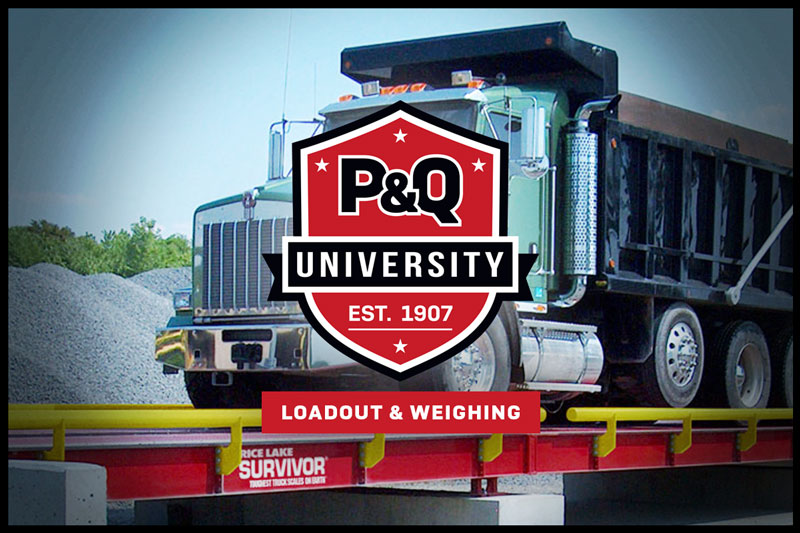
&uuid=(email))
&uuid=(email))
